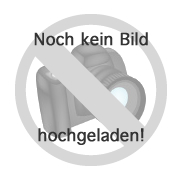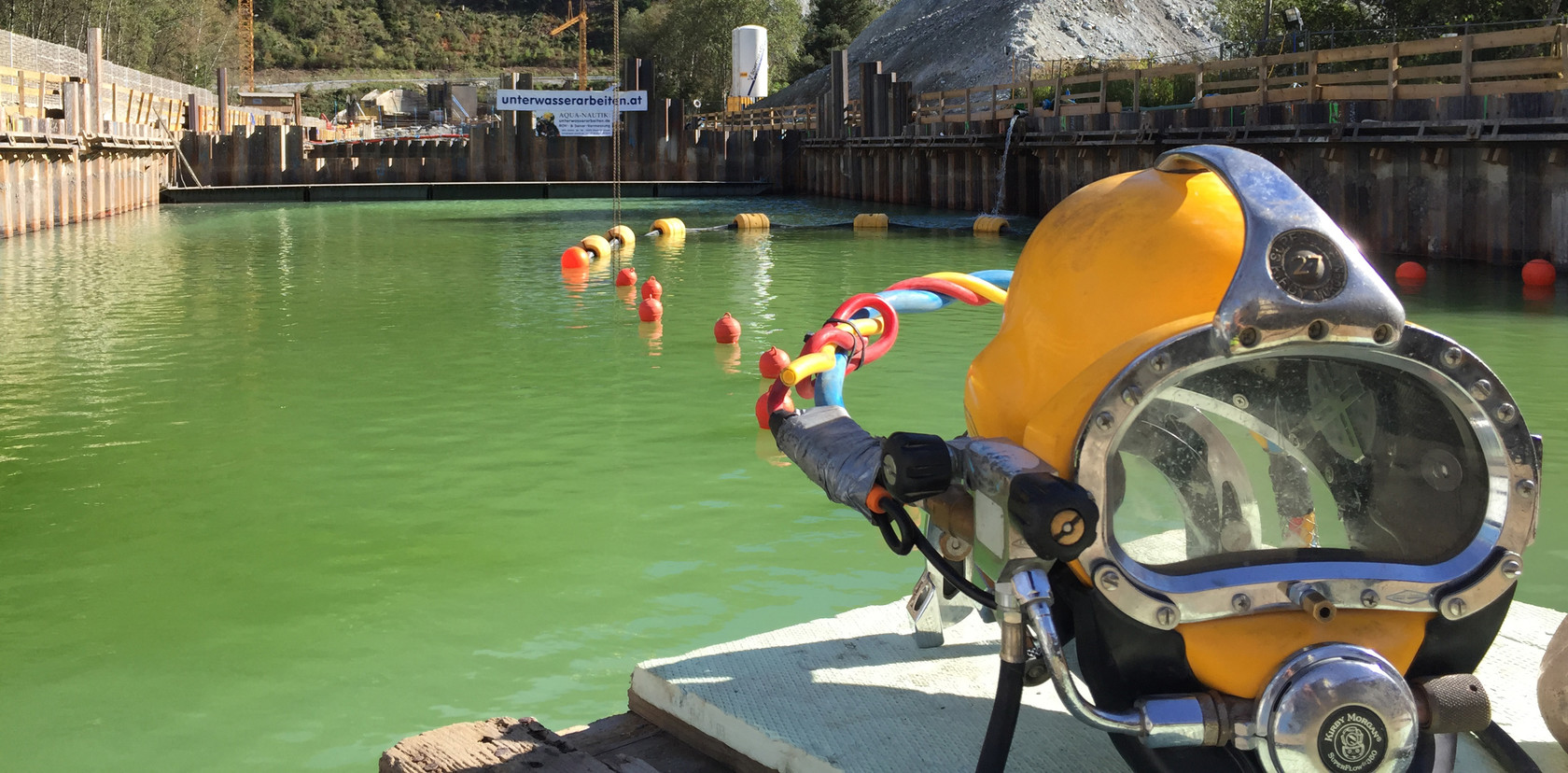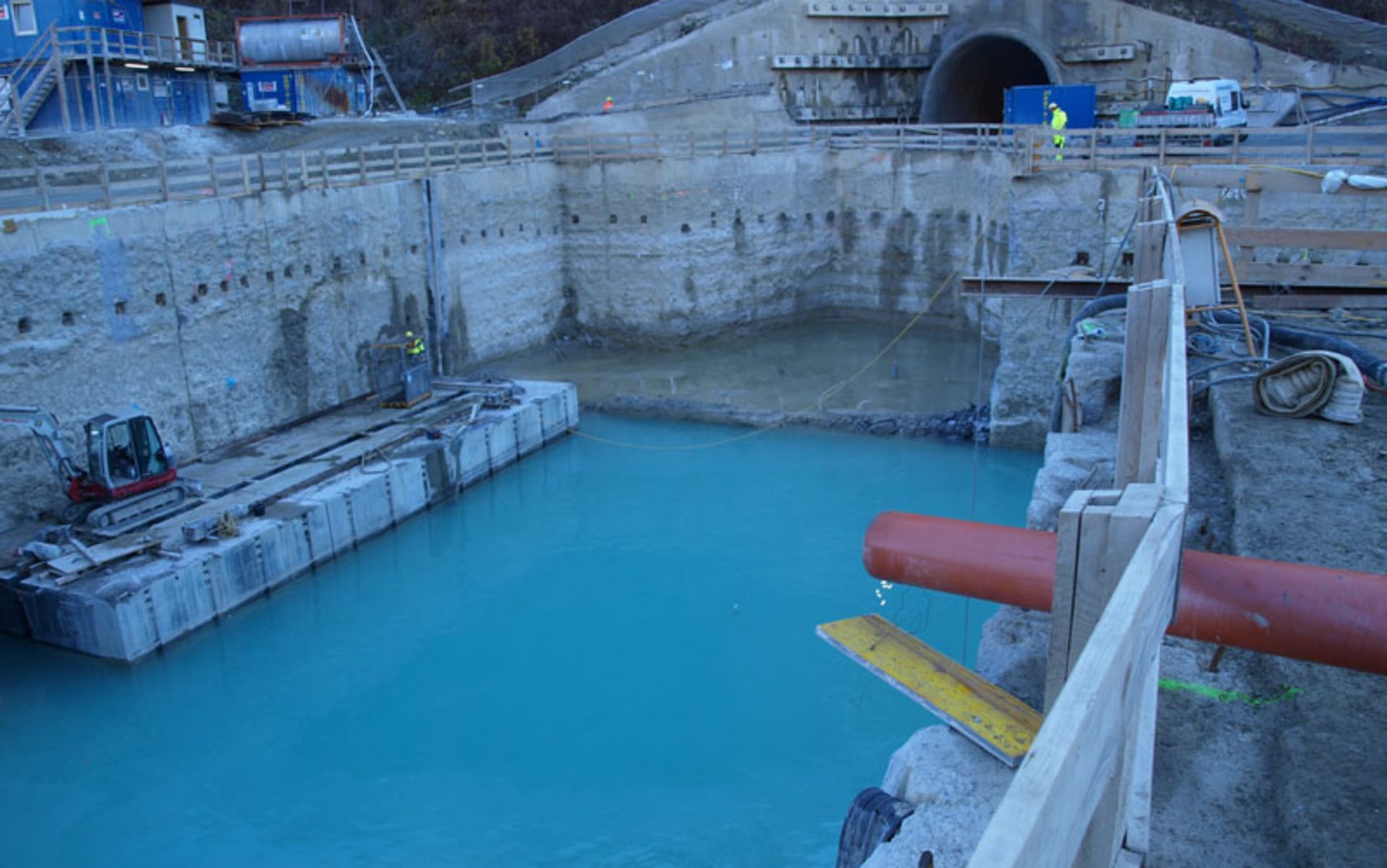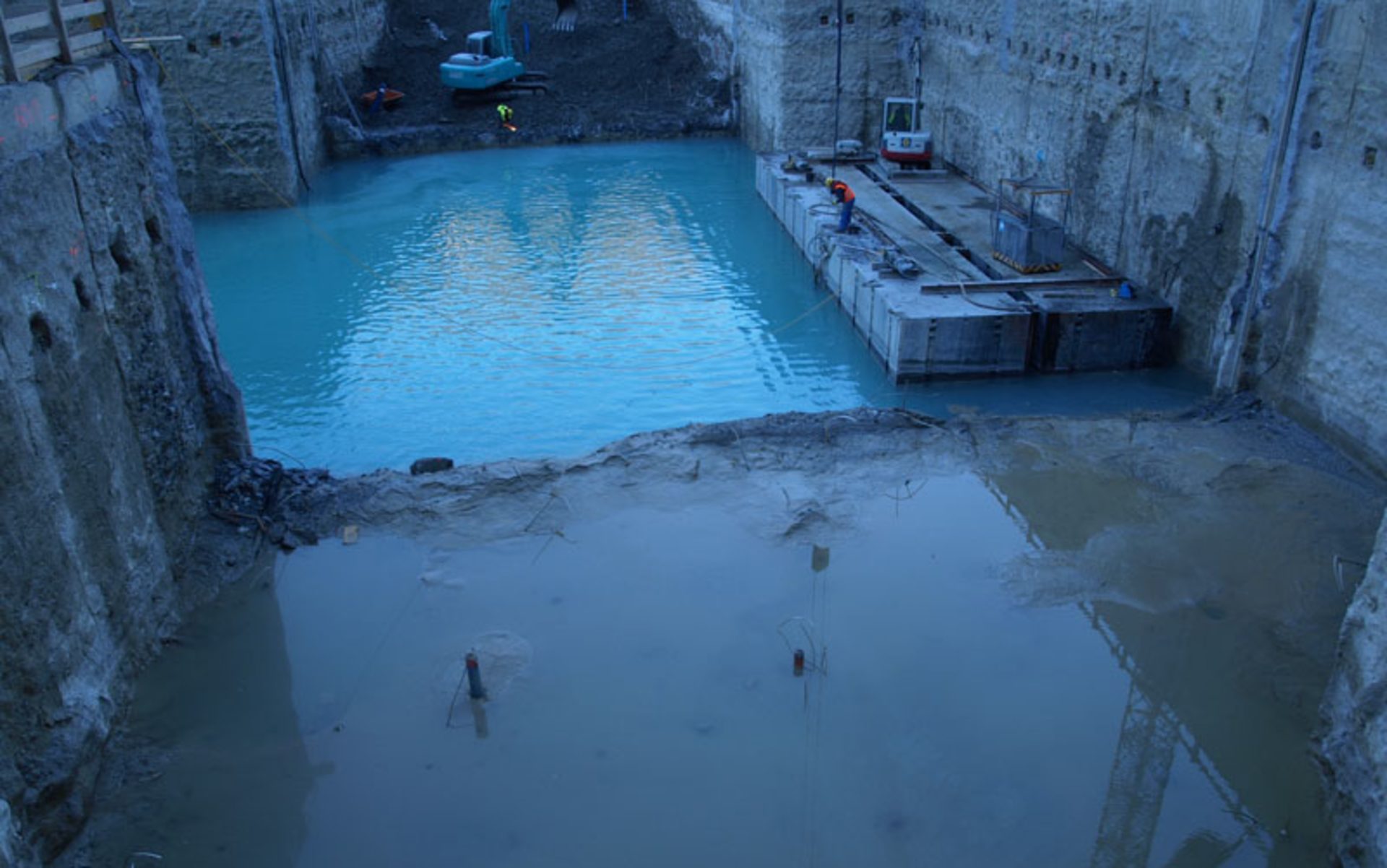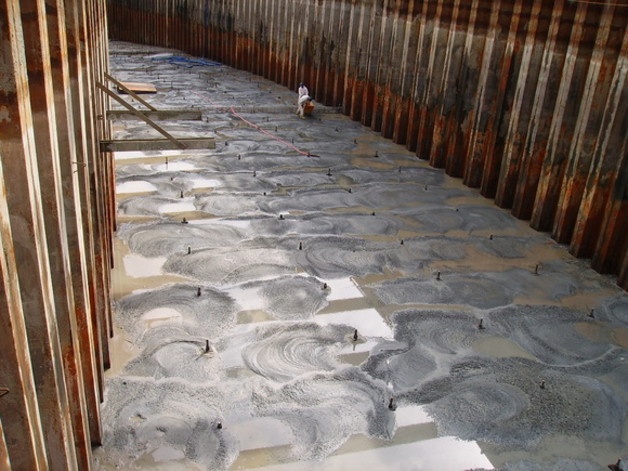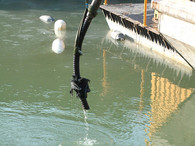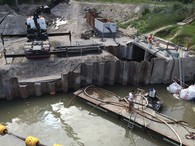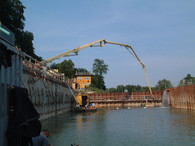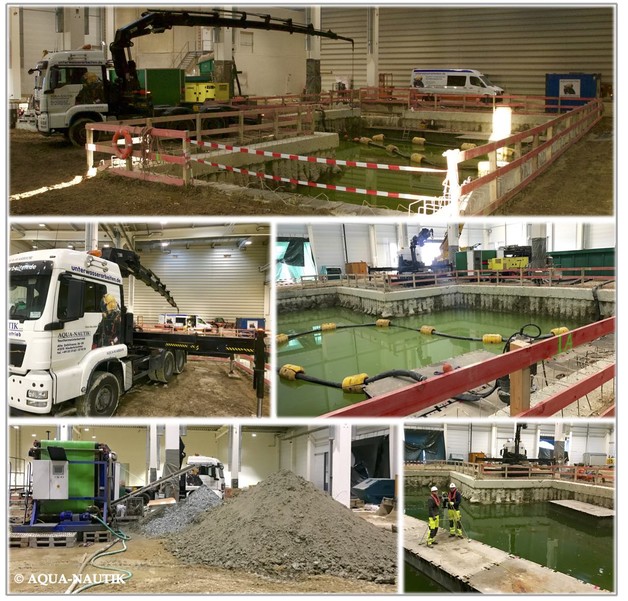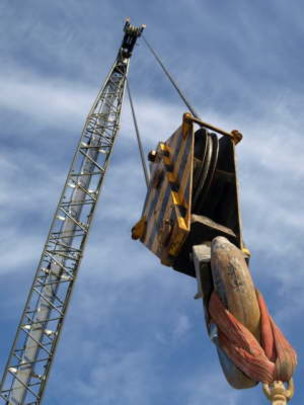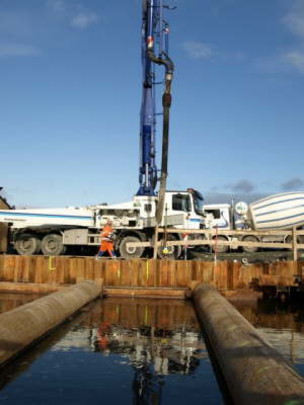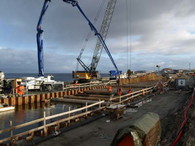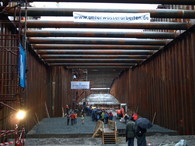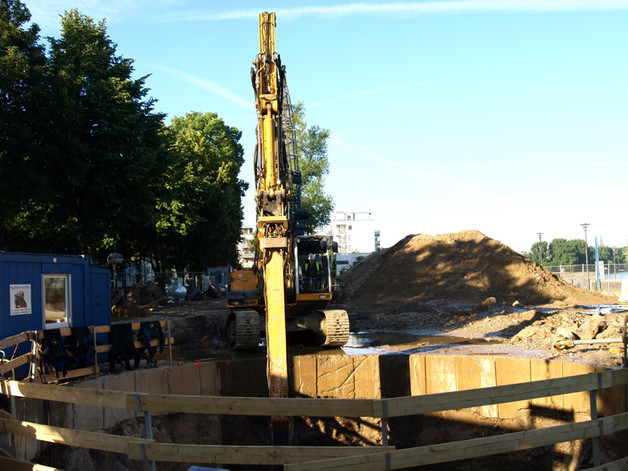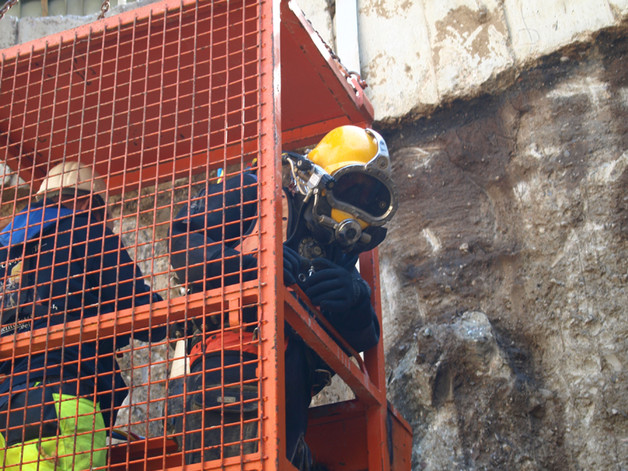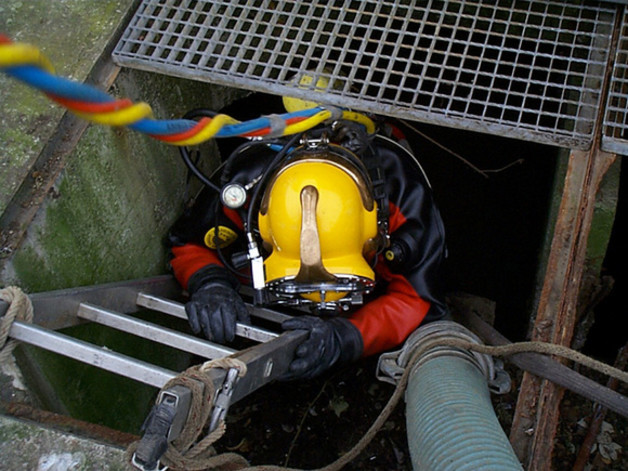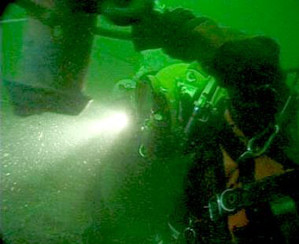We understand the term construction diving to include the creation of dry construction pits in high groundwater level areas.
A major challenge here is to handle the masses of sand, gravel and mud that accumulate under water.
Aqua-Nautik developed the option of separating solids, in particular sludge and clay components, from the conveying medium up to a volume flow of 520cy3/h and conveying clear water back into the construction pits with little equipment expenditure.
In addition, Aqua-Nautik has set itself the task of neutralizing the enriched alkaline water up to a volume flow of 160cy3/h during and after the underwater pouring.
In the following you can see different work performances of our construction diving department:
- UW-Beton und Sohlenvorbereitung
- Spezial: Skansen
- Ein- und Auslaufbauwerke an Industrie- und Kraftwerksanlagen
- Saug- und Spülarbeiten
- Dükerkontrollen
- Trinkwasserbrunnen
- Düker RheinEnergie
an excavation pit that is rarely seen anywhere else
Realization of the Lock Niederfinow is easy to see what work the divers usually have to perform in zero visibility.
Here you can clearly see which cement residues can arise when the tie back anchors are set, which afterwards have to be removed laboriously and tediously by divers.
We would like to thank Kaffenkahn e.V. for the permission to use the video.
Valve Installing WaStop® Inline Check Valve 71 in
Underwater Concrete / Sole Preparation
In order to create an underwater concrete foundation ("Tremie"), thorough preparation is essential.
1. Fine Leveling
i.e. the sole to be concreted must be leveled to the required level in order to be able to guarantee the sole strength. In most cases, the fine subgrade is created by underwater suction work.
2. Ensure Side Connections
i.e. the vertical connection points (side walls) of the later concrete base must be cleaned in order to guarantee the frictional connection between the UW concrete and the vertical boundary. To be on the safe side, so-called grouting hoses were inserted here in the past, which were possibly "grouted" with a cement suspension or with two component epoxi in order to close any breaches.
3. Clean and Equip the tie back anchor
Tie back anchors are used to anchor the concrete base back to prevent buoyancy. There are different methods of backup here. Probably the most frequently used is securing with so-called tie back anchors. These are placed in the base before concrete is poured in by drilling and grouting in a certain grid dimension. The task of the divers is to clear them from any grouting residues and to equip them with buoyancy protection (anchor plates).
4. Make the underwater concrete base “Tremie”
As soon as all preparations for the safe production of the base have been made, the pouring of the UW concrete will begin. The composition of the concrete depends, among other things, on the static requirements, the logistics for the UW concreting and the conditions of the area to be concreted, such as water depth or any interruptions in concreting. There are also various methods for placing the UW concrete. Depending on the system, concreting up to a slope of approx. 10% is possible.
